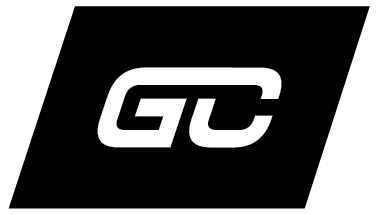ARE ATHLETIC DEPARTMENTS OSTRICHES OR GAMBLERS?
ATHLETIC DEPARTMENTS NEED TO GET PROACTIVE
When I coached college hockey in my mid to late twenties I had the chance to meet and interact with several very accomplished and successful coaches.
Many of them were willing to provide strong insights into the game or into the psychology of working with athletes in order to get them to excel. The best coaches I spoke to always talked about developing young men equipped to succeed not only on the ice but as successful citizens.
However, one of the quotes from those conversations that still stands out in my mind, was this one:
“Throw out wins and losses. Throw out graduation rates. My career hinges on the decisions a hormonal 18 to 22 year old kid makes while he is away from home for the first time.”
Beyond a coach lamenting that his job security was in the hands of young men who might find that university provides other pursuits beyond hockey that might prove more interesting, his statement resonates with me today on several levels. The decisions a 18-22 year old kid makes affect not only the careers of the coaches who work with them on a day to day basis. They can affect entire teams, athletic departments, universities and communities. The impact of a bad decision or a stupid tweet can in fact be catastrophic.
Universities with high profile athletic programs that don’t proactively seek to engage their student athletes in a consistent and sustained athlete development process or seek to skate by with the bare minimum of investment are in fact playing a dangerous game of ‘I hope we’ll be ok’ or ‘I think we’re fine’. Pejoratively speaking, they are akin to an Ostrich, head deep in the sand with its toes crossed for good luck.
It demonstrates a lack of understanding of the negative consequences associated with a crisis. The cost of dealing with a crisis typically costs in excess of 10 times what the proactive solution would have cost to implement. A lack of a student athlete development program in concert with ineffective student athlete engagement and experience reviews is analogous to not having home owners insurance. Of course, you really don’t wish you had insurance until your house is engulfed in flames.
THE COACH PROBLEM
In defense of the Universities, they are typically beholden to the attitude of their high profile coaches. Coaches are typically the worst offenders of not understanding the value of broad based department driven athlete development initiatives. They push back hard against any outside voices which they can’t or don’t directly control. Coaches view these initiatives as threats to their independence, influence, control or even more ridiculously as performance inhibitors.
Athletic directors need to rein in their coaches. Properly managed initiatives can serve to provide coaches with additional data about their team and evidence suggests that athletes with access to broad based development resources are in fact more likely to perform better.
If you remove coaches red herring of performance for pushing back against the implementation of athlete development resources you are left with issues pertaining to control and influence. Athletic departments should live in fear of coaches who attempt to micromanage access to their athletes or programs. In fact, athletic departments should be seeking to acquire a deeper understanding of how their coaches do their jobs. Are they operating in the best interests of the school or the student athletes (for some coaches there can be many millions of reasons why the schools interests might not be top of mind). The only way to do this is to collect data in a manner that is fair, impartial and independent of both the coach, athletic department and the university.
The last issue is cost. For many institutions cost is a barrier. However, this is also a red herring. When a crisis strikes a university it is absolutely amazing how suddenly money appears on the table. And typically, it is a lot of money. The best crisis management and communication people typically charge between $10,000 to $20,000 a day. A twenty day engagement could cost as much as $400,000 plus on-going retainers. This doesn’t include hiring outside counsel, investigators, panels, or other outside experts. It also doesn’t factor in productivity costs, due to the fact staff are now solely focused on managing the crisis to the exclusion of any and all other activities. It doesn’t calculate reputation costs. A bad decision made by 1 or 2 student athletes can easily result in costs that easily break into the low to mid seven figures.
Let’s not be ridiculous either. Even the most advanced, proactive schools on the planet may not be able to avoid a crisis. Through the implementation of real, well researched athlete development initiatives you are at least giving yourself a chance to put your institution on a proactive footing to appropriately respond to and address issues ideally before they break over your institution in the form of a crisis.
Game Change was founded in 2011 to serve and enhance the athlete development needs of major professional and elite sport organizations and athletes. Game Change specializes in customized research and assessment services, the development of applied interventions and resources designed to provide long-term positive outcomes for organizations and individual athletes. Game Change believes strongly in sport as a catalyst for societal change and adheres to the philosophy of ‘changing the world one athlete at a time’.

